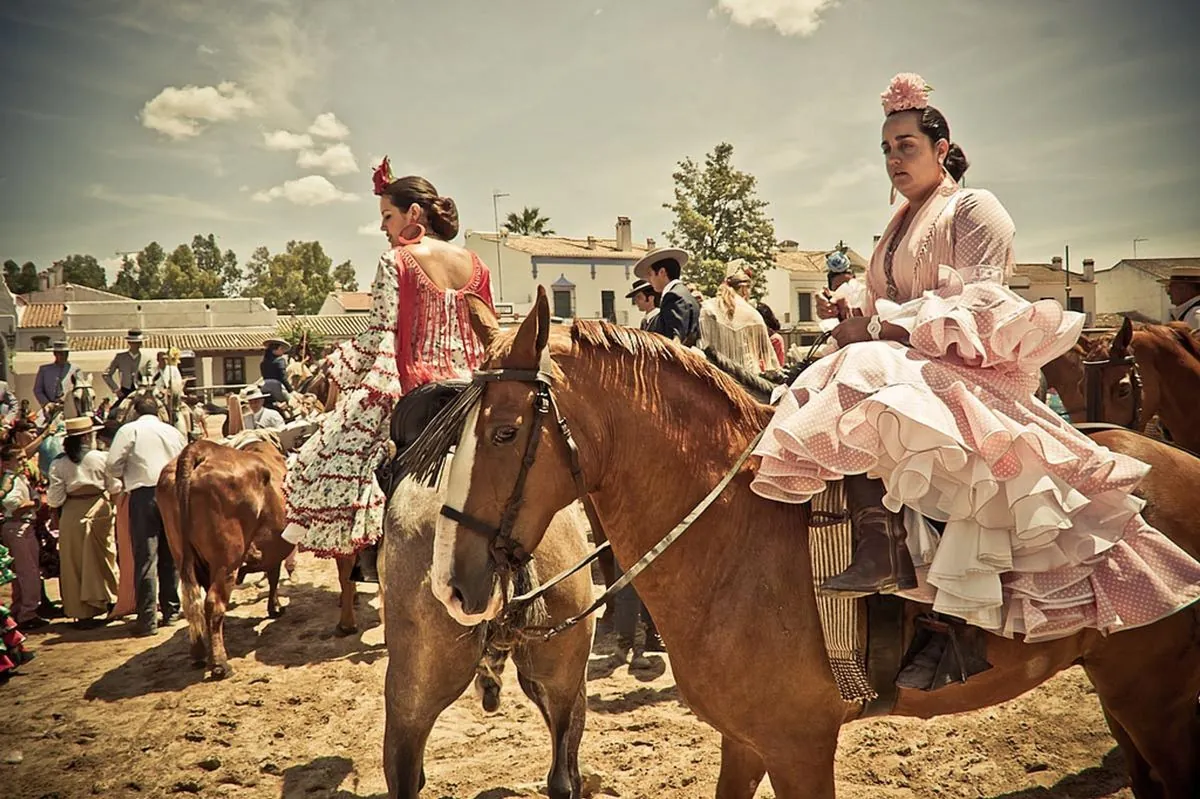El Rocío: Spain's Centuries-Old Pilgrimage Blends Faith and Tradition
El Rocío, a centuries-old Spanish pilgrimage, draws millions to Andalusia annually. This vibrant celebration of faith and culture showcases traditional attire, music, and horseback journeys to honor the Virgin of El Rocío.

In the heart of Andalusia, Spain, a centuries-old tradition continues to thrive. The El Rocío pilgrimage, dating back to the 17th century, draws millions of participants each year to a small village between Seville and the Gulf of Cádiz. This event, occurring annually in May or June, embodies the essence of Andalusian culture and Catholic devotion.
The pilgrimage showcases a vibrant display of traditional attire and customs. Fruti Guerrero, a 25-year-old participant from Huelva, exemplifies the multigenerational nature of the event. He shares, "It is a tradition that comes from my great-great-grandparents." This sentiment echoes throughout the pilgrimage, as young and old alike participate with equal fervor.

The journey to El Rocío is as significant as the destination itself. Pilgrims travel by various means, including oxen-pulled carts, horseback, and on foot. The procession creates a mesmerizing spectacle, with riders in traditional sombreros Cordobés and women in flowing, polka-dotted dresses. The air fills with the sound of guitar strumming and rhythmic clapping, accompanied by the drinking of Manzanilla wine.
El Rocío village, despite its small permanent population of about 1,600, transforms during the pilgrimage. It becomes home to over 100 brotherhoods from across Spain, with its population swelling to over a million. The village's unpaved streets contribute to its unique, almost Wild West-like atmosphere.
"The truth is that everything that revolves around El Rocío means a lot to me. Many vivid memories, family members who are no longer there that you always remember, many sincere friends who are with you and above all, the Virgin of El Rocío, who for me is the greatest inheritance that my elders left me."
The pilgrimage's focal point is La Virgen del Rocío, a Catholic icon also known as the "Paloma Blanca" or White Dove. The statue, dating back to the 13th century, is housed in the Ermita del Rocío, the village's main church. The event culminates in a procession where the statue is carried around the village, drawing emotional responses from participants.
For those considering attending, comfortable walking shoes and dust masks are advisable. The journey involves traversing soft sand under the Andalusian sun, though stone pines offer occasional shade. The warmth and generosity of the pilgrims are notable, with many offering food and drink to passersby.
The El Rocío pilgrimage stands as a testament to the enduring power of tradition in an increasingly secular Spain. As Guerrero affirms, "Of course, I will pass it on to the next generations and to everyone who wants to experience this wonderful pilgrimage." This commitment ensures that this unique blend of faith, culture, and community will continue to captivate future generations.


































